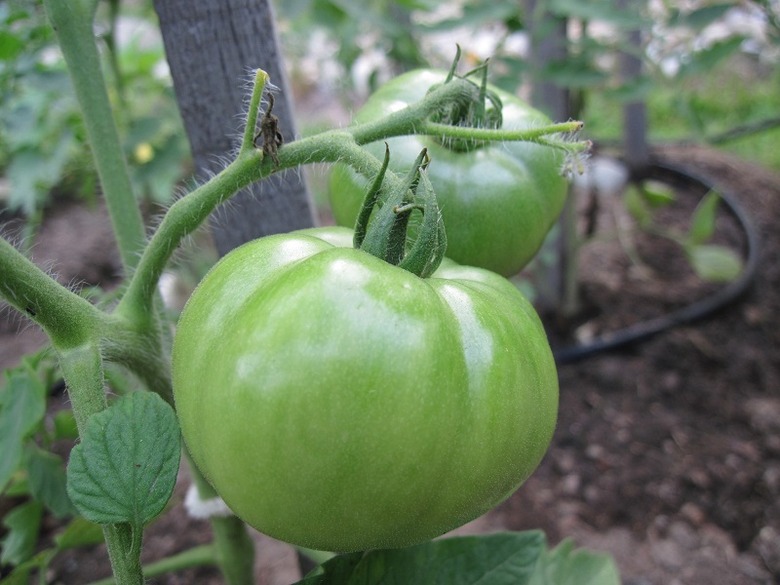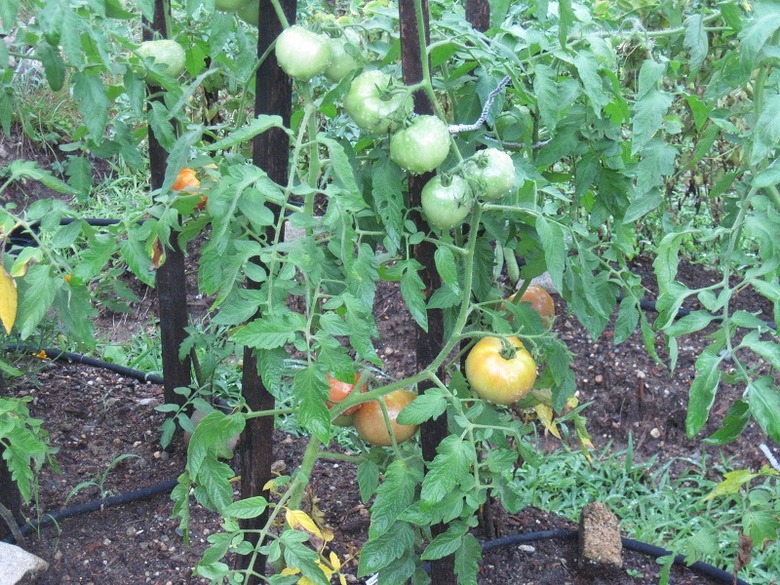How To Grow Celebrity Tomatoes
Celebrity tomatoes are a popular cultivar grown in home gardens. Like other tomatoes, these plants require consistent moisture and full sun in order to produce a quality crop. This particular cultivar is resistant to a number of tomato diseases.
A former All-America Selection, the Celebrity tomato plant (Solanum lycopersicum 'Celebrity') is a popular hybrid tomato cultivar for the home garden prized for its flavorful fruit and disease resistance. Celebrity tomato seeds were introduced into the market in the late 1980s.
Tomato plants are perennials in USDA hardiness zones 10 to 12; however, they are typically grown as annual plants.
About Celebrity Tomato Plants
Celebrity tomato plants produce fruit that grows in a globe shape and are considered "beefsteak" tomatoes. Celebrity tomatoes usually have diameters of about 4 inches and weigh approximately 8 ounces each. These tomatoes continue to ripen after they have been picked until they turn a bright red.
Celebrity tomatoes are also said to be resistant to cracking and splitting, which can be a problem with other tomato varieties.
Growth Habit
Tomatoes are usually classified as "determinate" and "indeterminate." Determinate tomatoes grow in bush form and stop growing after setting fruit. The fruit ripen more or less at the same time. Indeterminate tomatoes, on the other hand, are vining and continue to grow and set fruit throughout the growing season.
Celebrity tomato plants are semi-determinate, meaning that they grow in bush form and have a limited size, but grow over a longer period of time than most determinate tomatoes and reach a larger size. These tomatoes have a height between 4 and 6 feet and take approximately 72 days to ripen.
Tip
Celebrity tomato plants have typical heights between 4 and 6 feet.
Growing Celebrity Tomatoes
Like all tomatoes, Celebrity tomatoes grow best in full sun and require well-draining soil. Tomatoes grow best in soil that has a pH between 5.5 and 7 and should receive about an inch of water a week. They also need to be supported with staking or a cage.
Because they are warm weather crops, it is important to wait until the last frost date of the spring has passed before planting tomato seeds. In cold climates, you may want to start seeds indoors five to six weeks before the last frost, and transplant them into garden beds when the soil has warmed up.
Fertilizer
Prior to planting tomatoes, it is a good idea to conduct a soil test to determine how much potassium or phosphorus should be supplemented. It is also important not to apply too much nitrogen, which can cause foliage growth at the expense of fruit production.
Tomatoes are heavy feeders, however, so be sure to enrich the soil with organic matter.
Tomato plants should also be fertilized four weeks after planting with calcium nitrate at a rate of 1 pound per every 100 square feet in order to prevent a condition known as blossom end rot, which is caused by calcium deficiency. It is important to apply the fertilizer between 4 and 6 inches away from the plants to avoid injury to the plants' roots.
Diseases
The Celebrity tomato cultivar is resistant to a number of diseases that often plague tomato plants, including tobacco mosaic virus, verticillium wilt, fusarium wilt and root-knot nematodes.
That said, when planting tomatoes, it is best to choose a spot where tomatoes or other members of the Solanum genus have not been grown in the last two years. These include eggplants, peppers and tomatoes. This is because all of these plants are susceptible to the same soil-borne diseases that can linger in the soil.
Tip
Celebrity tomatoes are considered resistant to a number of common tomato diseases.
It is important to water tomato plants consistently to avoid a condition known as blossom end rot. Avoid overhead watering, which can cause leaf spots, and provide plants with plenty of air circulation to prevent the development of powdery mildew.
References
- Plants for a Future: Solanum Lycopersicum
- Texas A&M AgriLife Extension: Celebrity Tomato Latest Texas Superstar
- UC Master Gardeners of Butte County: The Real Dirt Blog – Tomato Varieties
- Rutgers University: New Jersey Agricultural Research Station – Celebrity
- The National Gardening Association: Solanum lycopersicum 'Celebrity'
- Cornell College of Agriculture and Life Sciences: Disease-resistant tomato varieties
- University of Florida IFAS Extension: Tomatoes
- University of Minnesota Extension: Growing tomatoes in home gardens
- Clemson Cooperative Extension: Tomato
- Rutgers University New Jersey Agricultural Experiment Station: Growing Tomatoes in the Home Garden
- Michigan State University: Blossom-end rot of tomato tip sheet

